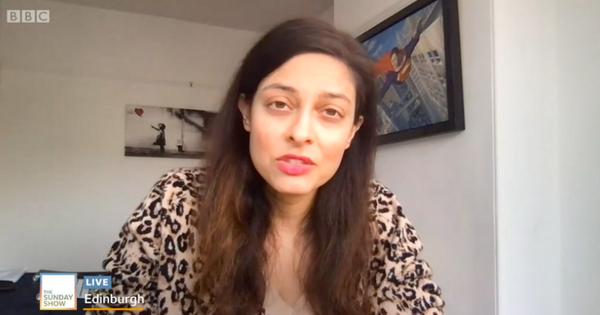
As we move into summer, more than two years since the outbreak of the Covid-19 pandemic, the words “new wave” are probably the last thing anyone wants to hear. Yet it is true that recent UK data (as well as data from Florida and other places) indicates that sublineages of the Omicron variant, BA.4 and BA.5, are kicking off a new wave of cases. With the pandemic no longer dominating the news in the way it once did, it’s worth taking stock of where we are and what needs to be done.
After all, these variations on Omicron are not more severe, but they do have the capacity to reinfect people, even those who have had a previous version of Omicron. This is further evidence that reaching “herd immunity” (where enough people are vaccinated or infected to stop further circulation) against Covid-19 is probably impossible.
Looking over the past two years, and across different places, a wave of Covid-19 cases every three months seems to be the pattern. So it’s not surprising that this is happening again, and we should expect another wave this winter. While the idea of the disease circulating might be anxiety-provoking, we now have a wealth of scientific knowledge and tools to deploy. The focus should be on what these cases mean for long Covid and for hospitalisations. Plus, there’s good news: new research indicates Omicron is indeed milder than Delta by a substantial amount in terms of hospitalisations and deaths.
Of course, it would be better to avoid getting Covid-19 once, or repeatedly, given the increasing number of negative health outcomes the disease is linked to. The challenge is how best to do that, balanced against the costs entailed in avoiding Covid completely: the vector for this disease is other humans who we (largely) enjoy seeing, being close to, or must see for work reasons. Humans are social beings, and for many people a large part of our quality of life is mixing with others, as seen by the rapid return to festivals, celebrations and social events.
Forgive me if you’d heard this one before, but masks and ventilation are still important measures we can take. Wearing a medical-grade mask is an effective way of protecting yourself from respiratory infections, especially in crowded settings. That said, we also need to recognise that they are costly, and can be uncomfortable if worn for long stretches of time. In addition, masks interfere with wanting to see people’s faces, engage with their emotions and interact at an intimate level; child specialists have raised concerns about the impact on child speech and emotional development. Indoor ventilation is important in reducing transmission. However, ventilation alone is unlikely to stop a wave of infections: you only have to look at Shanghai and the difficulty Chinese authorities there have had in stopping the spread of Omicron in a highly controlled lockdown setting.
The cost-benefit calculation has shifted for many people over time, as other more pressing priorities have taken over. Avoiding infection in 2020 by restricting interactions to certain people and limited settings was understandable, given there were no vaccines or therapies. The cost was high, financially and socially, but waiting for a vaccine meant there was a payoff to being cautious and delaying infection. Analysis from the Financial Times indicates that for most people in England, Covid-19 has become less lethal than seasonal flu because of the high levels of immunity after vaccination and the reduced severity of Omicron compared with Delta. In 2022, most people want to interact and live life as they see best (in a democracy where freedom is valued), given that disease severity has been blunted with vaccines.
What does this mean for all of us? The UK should be planning to roll out boosters to the entire population this autumn, using an age and risk factor priority scheme (instead of just to people over 75, those in care homes and those with weakened immune systems: these are the people covered by the current spring booster scheme). Antiviral supply should be put in place in pharmacies and GPs, working towards a “test to treat” scheme where soon after testing positive, those who are in vulnerable and elderly groups, for whom vaccines might be less effective, can get access to effective treatment early on.
Another important concern is long Covid, which can cause months of illness and suffering. We still have no clear indication of who is likely to get this condition and who will recover quickly. Here, a deeper understanding of the biological mechanisms and treatments is vital. How can we support recovery and rehabilitation? Research has shown that people who were fully vaccinated were half as likely to get long Covid as those who had one or no vaccines.
And what does this mean for winter, when we expect the next wave to hit? While vaccines and antivirals have pushed the hospitalisation rate down, it’s equally important to invest in nurses, doctors, hospital staff and beds. After all, the NHS is already stretched this summer. The consequence will be unnecessary and preventable deaths, and staff working in difficult conditions unless the health service gets what it needs.
Public health is about all the factors that help someone live a healthy and happy life. And while strong opinions continue to be voiced on whether we can “live with Covid” or not, the fact is that almost every country on this planet is learning to manage this disease among the plethora of other problems that we face as humans. The situation is complex with no simple fix. No, we haven’t solved Covid, but we are getting smarter and better at managing this disease.
Prof Devi Sridhar is chair of global public health at the University of Edinburgh










